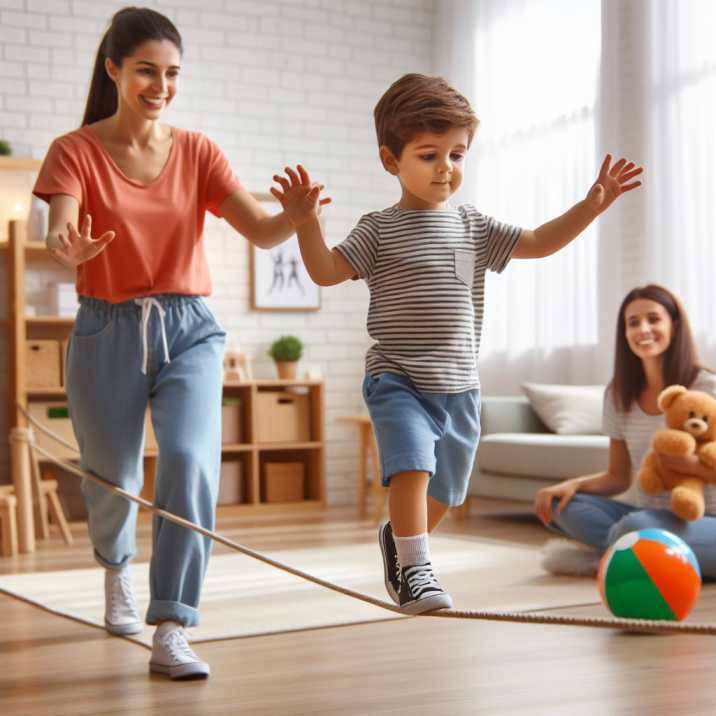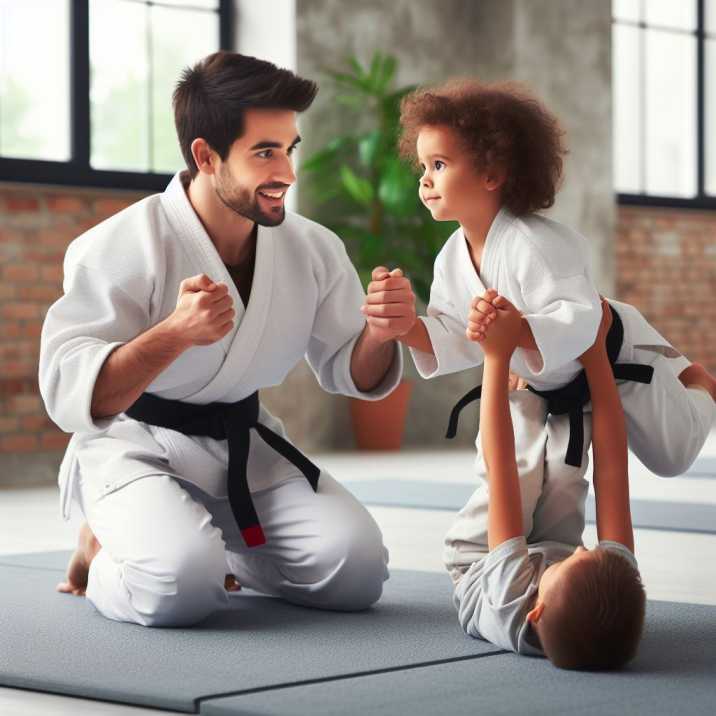Balance in Preschool Martial Arts
Table of Contents
Introduction
Balance in preschool martial arts education is a unique and rewarding journey, filled with opportunities to instill discipline and focus in young minds. As instructors, finding creative ways to teach balance becomes essential, ensuring that these foundational skills are learned in an engaging and effective manner. In this comprehensive guide, we’ll explore 10 powerful methods to teach balance to preschool martial arts students, setting the stage for a lifelong love of physical activity and discipline.

10 creative methods of balance in preschool martial arts
Imaginary Tightrope Walk:
Begin with a fun warm-up by introducing the concept of an imaginary tightrope. Encourage students to walk along this invisible line, emphasizing proper posture and balance. This not only engages their imagination but also helps develop core strength.
Animal Balance Poses:
Transform balance training into a playful activity by incorporating animal-themed poses. From the sturdy bear stance to the graceful flamingo pose, associating movements with animals adds an element of fun, making the learning process enjoyable.
Obstacle Course Challenges:
Set up a mini obstacle course with mats, cones, and balance beams. Guide students through various challenges, promoting agility and coordination. This hands-on approach fosters a sense of accomplishment as they navigate through the course.
Martial Arts Storytelling:
Infuse storytelling into your martial arts lessons, creating narratives that involve balance challenges. This not only captures their attention but also helps them understand the importance of balance in different scenarios.
Colorful Balance Mats:
Incorporate vibrant and visually appealing balance mats into your sessions. Assign different colors to specific balance exercises, creating a multisensory experience that enhances spatial awareness and coordination.
Musical Balance Games:
Turn balance drills into a musical experience. Play rhythmic tunes and instruct students to move in sync with the music, incorporating balance exercises. This not only adds an element of joy but also helps develop a sense of timing.
Partner Balancing Activities:
Introduce partner activities that require cooperation and teamwork. Pair students up for mirror exercises, where one mimics the movements of the other. This not only enhances balance but also promotes social interaction.

Prop-Based Balancing:
Incorporate props like scarves, beanbags, or soft balls into balance exercises. These props add an extra layer of challenge, encouraging students to focus on balance while manipulating objects, fostering improved hand-eye coordination.
Balance Board Adventures:
Introduce balance boards tailored to preschoolers’ needs. These dynamic tools engage multiple muscle groups, enhancing overall stability. Begin with simple exercises and gradually progress to more advanced maneuvers.
Nature-inspired Balancing:
Take the class outdoors and use the natural environment for balance training. Utilize rocks, tree stumps, or uneven terrain to challenge students’ stability. Connecting with nature enhances the learning experience and adds an extra layer of excitement.
Conclusion:
Teaching balance in preschool martial arts students is a delicate art that requires a blend of creativity, patience, and strategic planning. By incorporating these 10 creative methods of balance in preschool martial arts , instructors can make the learning process enjoyable while laying a solid foundation for physical and mental development.
Frequently Asked Questions:
1. How can I make balance training fun for preschoolers?
- Answer: Incorporate imaginative games, animal-themed poses, and colorful props to make balance training enjoyable for young learners.
2. Are balance boards suitable for preschoolers?
- Answer: Yes, age-appropriate balance boards can be beneficial for preschoolers, enhancing their stability and coordination skills.
3. What role does storytelling play in teaching balance?
- Answer: Storytelling engages children’s imagination and helps them understand the importance of balance in real-life scenarios.
4. Can preschoolers benefit from partner balancing activities?
- Answer: Yes, partner activities foster cooperation, teamwork, and social interaction, in addition to improving balance skills.
5. How often should balance training be incorporated into martial arts classes?
- Answer: Aim for a balanced approach, incorporating these activities into regular classes to gradually build and reinforce essential skills.
6. Are obstacle courses suitable for preschoolers?
- Answer: Yes, age-appropriate obstacle courses enhance agility, coordination, and overall physical development in preschool martial arts students.
7. What precautions should be taken during balance training for young children?
- Answer: Ensure a safe environment, use age-appropriate equipment, and provide proper supervision to minimize the risk of injuries.
8. Can music enhance balance training for preschoolers?
- Answer: Yes, rhythmic tunes add an element of joy and help preschoolers develop a sense of timing and coordination during balance exercises.
9. How do colorful balance mats contribute to the learning process?
- Answer: Colorful mats create a visually stimulating environment, enhancing spatial awareness and coordination during balance training.
10. What are some nature-inspired balance activities for preschoolers?
- Answer: Use rocks, tree stumps, or uneven terrain outdoors to challenge preschoolers’ stability and connect them with nature.
11. Are there any specific safety guidelines for balance board use?
- Answer: Always choose age-appropriate balance boards, provide proper supervision, and ensure a safe environment to prevent accidents.
12. How can parents support balance training at home?
- Answer: Encourage play-based activities, use household items for balancing, and provide positive reinforcement to support balance training at home.


